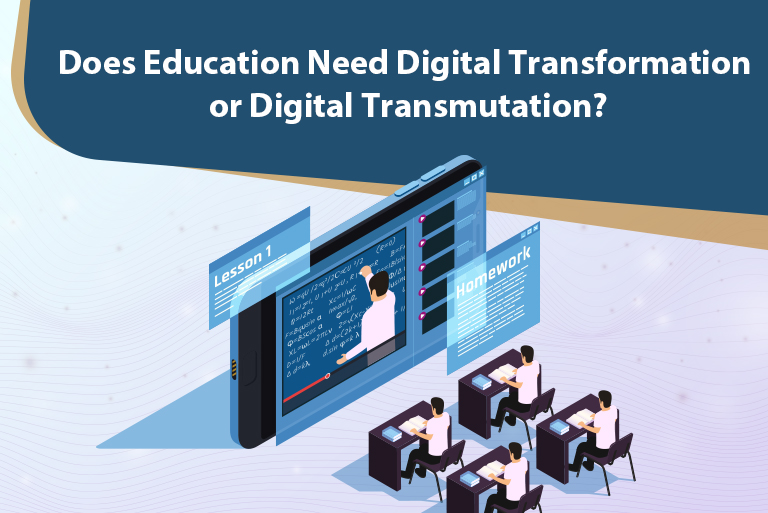Digital transformation in the education sector is often discussed as the process of incorporating technology into an institution’s services, processes, and strategies to improve the student experience. Transformation means to change from one form to another. Improving education with digital transformation is beneficial but may not be enough. To transmute is also to transform, resulting in a higher form than the original. Academic programs and methods may not consistently keep pace with technology’s continuing evolution and miss opportunities to incorporate new ways to empower students and faculty. Technology is more than automation or efficiency; rapidly developing technologies like artificial intelligence can produce new knowledge and encourage ethical discussions. Rethinking education with a continuous evaluation and optimization process is a reoccurring effort to dismantle, restructure, and rebuild to leverage the value of technology.
Healthcare, banking, retail, and entertainment responded to cultural change by redefining customer service and support through the strategic use of technology. To provide students with rapid response, agility, and innovation, it can be challenging for the education sector due to financial and resource challenges. The obstacles that prevent education from changing legacy systems, methods, and models threaten institutional growth and continue to prevent nontraditional populations and underserved students from exercising their right to an education.
Technology is an essential component of an effective, continuous evaluation and optimization model. Rethinking the campus in this way may mean retraining and reallocating resources. The impact of technology can be disruptive and requires thoughtful collaboration, patience, and empathy. These difficult but important strategic decisions can reshape the appearance, mission, location, and functionality of college campuses and create a higher form of education.

